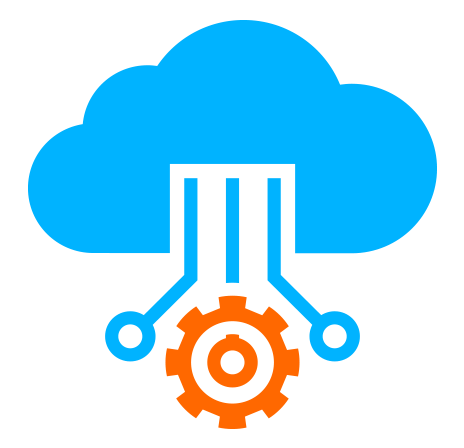 Server
Colocation
Server
Colocation
 CDN
Network
CDN
Network
 Linux Cloud
Hosting
Linux Cloud
Hosting
 VMware Public
Cloud
VMware Public
Cloud
 Multi-Cloud
Hosting
Multi-Cloud
Hosting
 Cloud
Server Hosting
Cloud
Server Hosting
 Kubernetes
Kubernetes
 API Gateway
API Gateway

We’re in an era of information overload. Every day, businesses, researchers, and developers sift through terabytes of documents, code, and multimedia—and they need answers fast and accurately. It’s no wonder that Retrieval-Augmented Generation (RAG AI) has emerged as a revolutionary approach in 2025.
Here are two eye-opening stats:
Over 80% of enterprise knowledge is unstructured, making it difficult for traditional systems to access and understand.
A whopping 70% of developers and data scientists say that generating real-time, accurate context-aware responses is still a major challenge.
These pain points have paved the way for RAG AI—a hybrid model that combines smart retrieval systems with state-of-the-art generative AI. By bringing information into the generation process, RAG systems deliver responses that are not just coherent but also grounded and reliable.
In this guide, we'll unpack what RAG AI really is, explore how it works, dive into best practices and implementation patterns, and see why cloud infrastructure, particularly platforms like Cyfuture Cloud, plays a vital role in powering production-grade RAG applications.
Retrieval-Augmented Generation blends two powerful AI capabilities:
Retrieval – A fast search system that scours a knowledge base (documents, articles, files, web pages) to fetch relevant context based on a user query.
Generation – A large language model (LLM) like GPT or T5 that uses the retrieved context to craft a precise, human-like answer.
Here’s how it works in real terms:
User asks: “What were the key takeaways from the 2024 ESG summit?”
Retrieval system: Pulls transcripts, summaries, and expert articles from the ESG knowledge base.
Generative model: Writes a cohesive response using those context snippets, grounding claims in the retrieved info.
This ensures the answer isn’t just plausible—it’s factual and verifiable. That’s a significant leap from LLMs that sometimes hallucinate or rely solely on their training data.
Let’s talk about why RAG AI is gaining traction, especially in 2025:
By grounding generated answers in retrieved knowledge, the model delivers contextually accurate results that users can trust.
Instead of increasing LLM sizes endlessly (and expensively), RAG systems scale by expanding the knowledge base and optimizing retrieval. This is more affordable and sustainable—especially when supported by cloud hosting.
Want AI to reflect your latest product docs, internal reports, or news? Simply add those to the retrieval index. No costly model retraining required.
Built-in traceability shows where the context came from—important in sectors like healthcare, finance, and legal, where auditable responses are critical.
To build a robust RAG AI solution, you need three core components:
This is your reference library—stored and indexed in a vector database (e.g., Faiss, Pinecone, Weaviate, or Milvus). Documents are embedded, indexed, and then retrieved via semantic search.
Both your documents and user queries are converted into vectors using models like Sentence-BERT, OpenAI embeddings, or PaLM. This lets the system match them in high-dimensional space.
Once relevant snippets are retrieved, they’re passed along with the user’s question to a generative LLM (e.g., GPT-3.5, GPT-4, or T5). The model adds coherence and fluency to create the final answer.
User submits a query.
The system encodes the query into a vector.
The retrieval engine fetches top-k relevant context snippets.
The LLM uses those snippets to generate a grounded answer.
Optionally, post-processing can format, cite, or validate the output.
Building RAG AI isn’t just about picking good models—it’s about infrastructure design. Here’s where hosting comes into play:
For enterprise chatbots or customer support, you need sub-1-second retrieval and fast LLM inference. That means colocated servers with low-latency storage and networking.
Data grows, users increase, and queries spike. Dynamic infrastructure that scales both retrieval and generation nodes becomes essential.
Enterprise data needs encryption, access control, and backup—especially if it resides on public cloud or private cloud servers.
This is why managed platforms like Cyfuture Cloud are gaining adoption: they offer AI-specific hosting, GPU-backed inference servers, integrated vector DBs, auto-scaling, and enterprise-grade security.
Let’s look at a step-by-step implementation on Cloud-native infrastructure:
Collect all relevant docs—PDFs, intranet pages, training guides—and upload them to cloud storage. Split them into manageable chunks (e.g., 500 tokens each) and embed them with pre-trained models.
Store the vectors in a fully managed service like Pinecone or Milvus hosted on Cyfuture Cloud servers.
Deploy a server that accepts query text, converts it into an embedding, and performs a vector search to pull top-k chunks—ideally within tens of milliseconds.
Pack the retrieved context and the query into a combined prompt. Send it to an LLM via API—either managed on cloud GPU or via third-party model API—and return the model output.
Optionally:
Use metadata filters (dates, authors, categories)
Add source citations or pagination
Integrate post-processors for tone/length control or PDF formatting
Monitor:
Retrieval precision (how often context is relevant)
LLM response latency
Query throughput
User engagement and feedback
Use this feedback to refine embeddings, improve document chunking, or upgrade models.
Drawing on years of deployments, here are industry best practices:
Split documents to preserve context. Don’t break mid-sentence or mix unrelated content.
Too small, and you may lose relevant info; too large, and you hit context token limits of the LLM.
When you update your document set, re-index the vector DB to keep responses up to date.
If compliance is a must, host open-source LLMs on your private Cyfuture cloud GPU servers. For speed or fine-tuning, leverage API-based models.
Cache embeddings for repeated queries, shard vector DBs intelligently, and choose hosting regions close to your users.
Use human-in-the-loop reviews for precision, recall, hallucination rates, and answer usefulness.
RAG is transforming how enterprises access knowledge. A few examples:
Corporate Chatbots: Answer employee queries using internal policies, handbooks, even company-specific jargon.
Legal Tech: Provide case references and highlight statutes with citations.
Customer Support: Automate product Q&A and reduce support workload.
Academic Research: Generate summaries from journals, classify functions, and extract insights from data corpora.
Healthcare: Retrieve medical literature at query time and support doctors with grounded insights.
Retrieval-Augmented Generation represents a massive leap forward in making AI truly useful, transparent, and grounded. By hooking LLMs to searchable knowledge bases, we combine the flexibility of generation with the accuracy of retrieval.
But to really scale RAG AI, you need the right infrastructure: low-latency retrieval systems, GPU-backed inference, easy deployment pipelines, and enterprise-grade compliance. That’s where Cloud-native platforms like Cyfuture Cloud come in—offering ready-made stacks, from vector databases on secure servers to AI-optimized hosting with global scalability.
If you're building chatbots, internal assistants, legal research systems, or any knowledge-grounded AI application—RAG AI on the Cloud gives you the foundation to launch fast, iterate quickly, and deliver responses users can trust.

Let’s talk about the future, and make it happen!
By continuing to use and navigate this website, you are agreeing to the use of cookies.
Find out more


